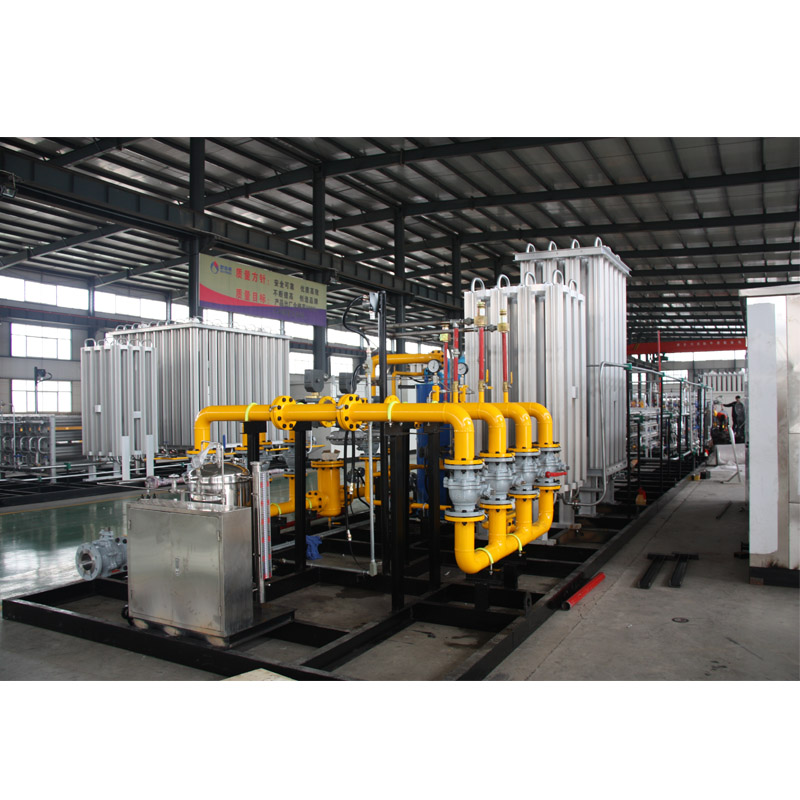
Dec . 27, 2024 06:41
Back to list
مخفض ضغط الغاز الطبيعي
The Importance of Natural Gas Pressure Reducing Stations
Natural gas is one of the most critical energy sources in the world today. Its role in heating, electricity generation, and as a feedstock for various chemical processes makes it an essential component of our energy infrastructure. However, as natural gas travels from production sites to end users, it must be processed to ensure safety and efficiency. One of the key elements in the transportation of natural gas is the pressure reducing station, also known as a gas pressure regulator.
Understanding the Function of Pressure Reducing Stations
Natural gas is transported through pipelines at high pressures to ensure efficient movement over long distances. The initial pressure may range from 2000 to 3000 psi, depending on the transmission pipeline's design and the gas source. However, when the gas reaches consumption areas, its pressure needs to be significantly reduced to safe and usable levels, usually between 5 to 60 psi, depending on the type of application—residential, commercial, or industrial.
This is where pressure reducing stations come into play. These stations are crucial components of natural gas distribution systems. They are designed to lower the pressure of the gas to a safe and manageable level before it enters local distribution networks. By doing so, they help to minimize the risk of leaks, explosions, and other hazards associated with high-pressure gas systems.
Components of a Pressure Reducing Station
Typically, a pressure reducing station consists of several key components
1. Pressure Regulators These are the primary devices responsible for reducing the pressure of gas as it flows through the system. Regulators maintain a constant outlet pressure regardless of fluctuations in inlet pressure or gas demand.
2. Filtration System Before gas enters the regulators, it often passes through filters to remove particulates and other impurities. This ensures that the regulators and downstream equipment are not damaged by contaminants.
مخفض ضغط الغاز الطبيعي

3. Flow Meters These devices measure the volume of gas flowing through the system, allowing operators to monitor usage and detect any discrepancies that might indicate leaks or other issues.
4. Safety Devices Safety valves and other mechanisms are essential to prevent overpressure situations. They are designed to release gas to maintain safe operating conditions.
5. Control Systems Modern pressure reducing stations are equipped with advanced control systems that monitor pressure and flow in real-time, ensuring that the station operates efficiently and safely.
The Role in Energy Efficiency and Safety
Pressure reducing stations are not only critical for safety but also play an important role in enhancing energy efficiency. By regulating gas pressure, these stations help optimize the performance of appliances and industrial processes, reducing energy waste. Furthermore, they allow for a more stable supply of gas, which is essential for maintaining service reliability.
In addition to their operational benefits, pressure reducing stations contribute to environmental sustainability. By ensuring that natural gas is delivered at the correct pressure, they help minimize gas losses and reduce emissions associated with leaks. This is particularly important as industries and governments aim to transition toward greener energy solutions and reduce greenhouse gas emissions.
Conclusion
In conclusion, natural gas pressure reducing stations are essential infrastructure components that ensure the safe and efficient delivery of natural gas. By converting high-pressure gas to a usable form, they protect end users while contributing to energy efficiency and sustainability efforts. As the world continues to rely on natural gas as a significant energy source, the importance of these stations will only grow, underscoring the need for continued investment and innovation in gas distribution systems.
Latest news
-
Safety Valve Spring-Loaded Design Overpressure ProtectionNewsJul.25,2025
-
Precision Voltage Regulator AC5 Accuracy Grade PerformanceNewsJul.25,2025
-
Natural Gas Pressure Regulating Skid Industrial Pipeline ApplicationsNewsJul.25,2025
-
Natural Gas Filter Stainless Steel Mesh Element DesignNewsJul.25,2025
-
Gas Pressure Regulator Valve Direct-Acting Spring-Loaded DesignNewsJul.25,2025
-
Decompression Equipment Multi-Stage Heat Exchange System DesignNewsJul.25,2025

